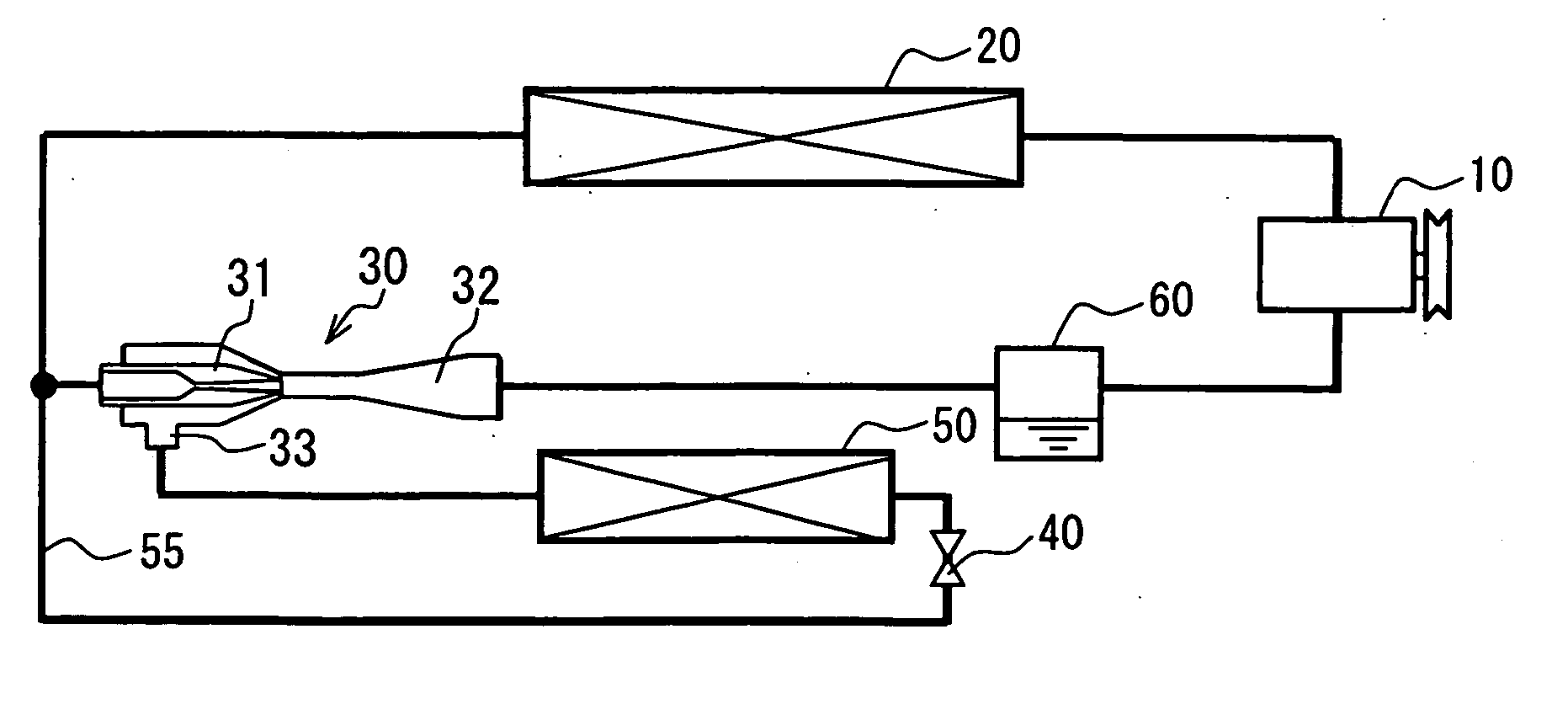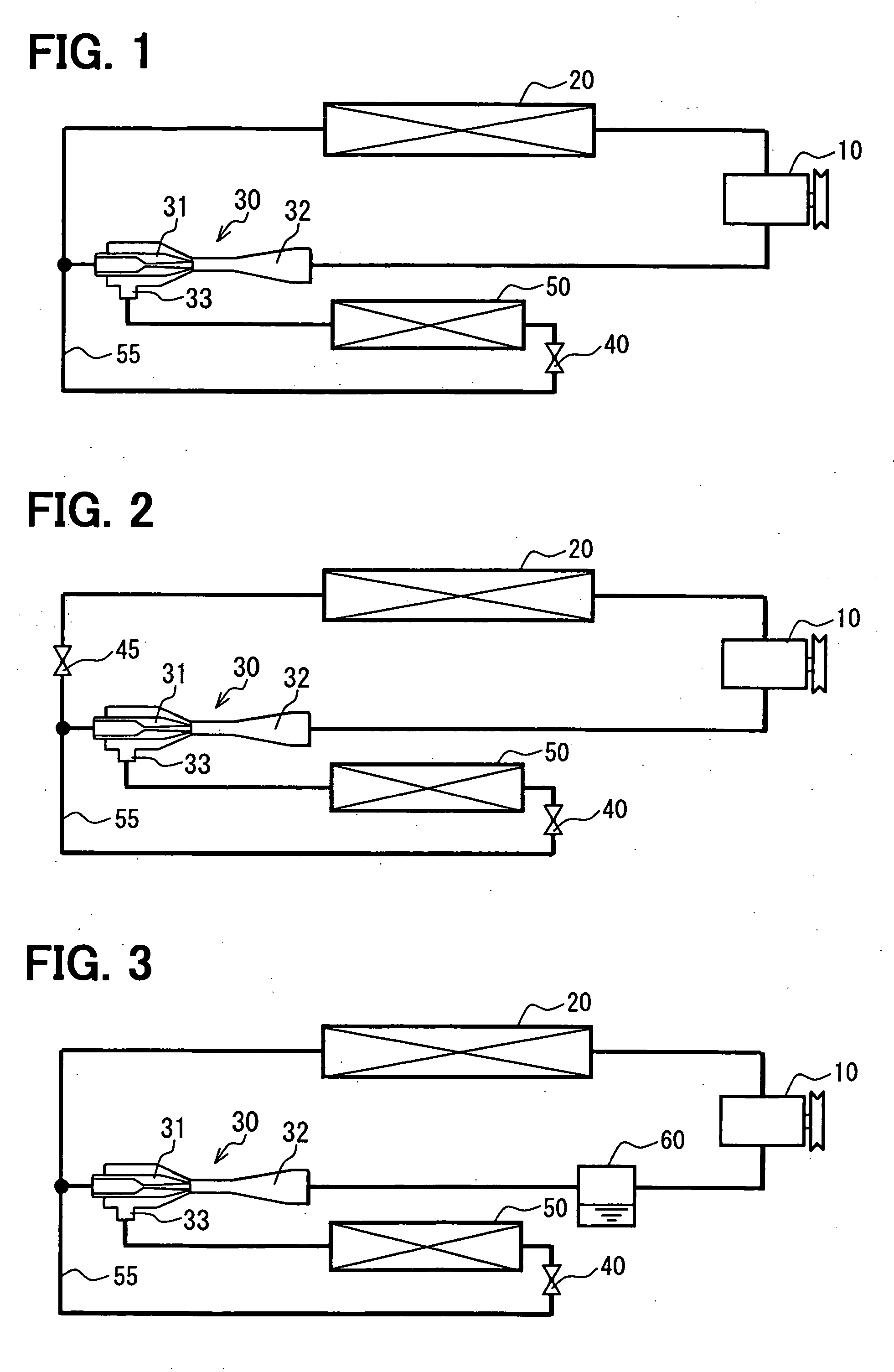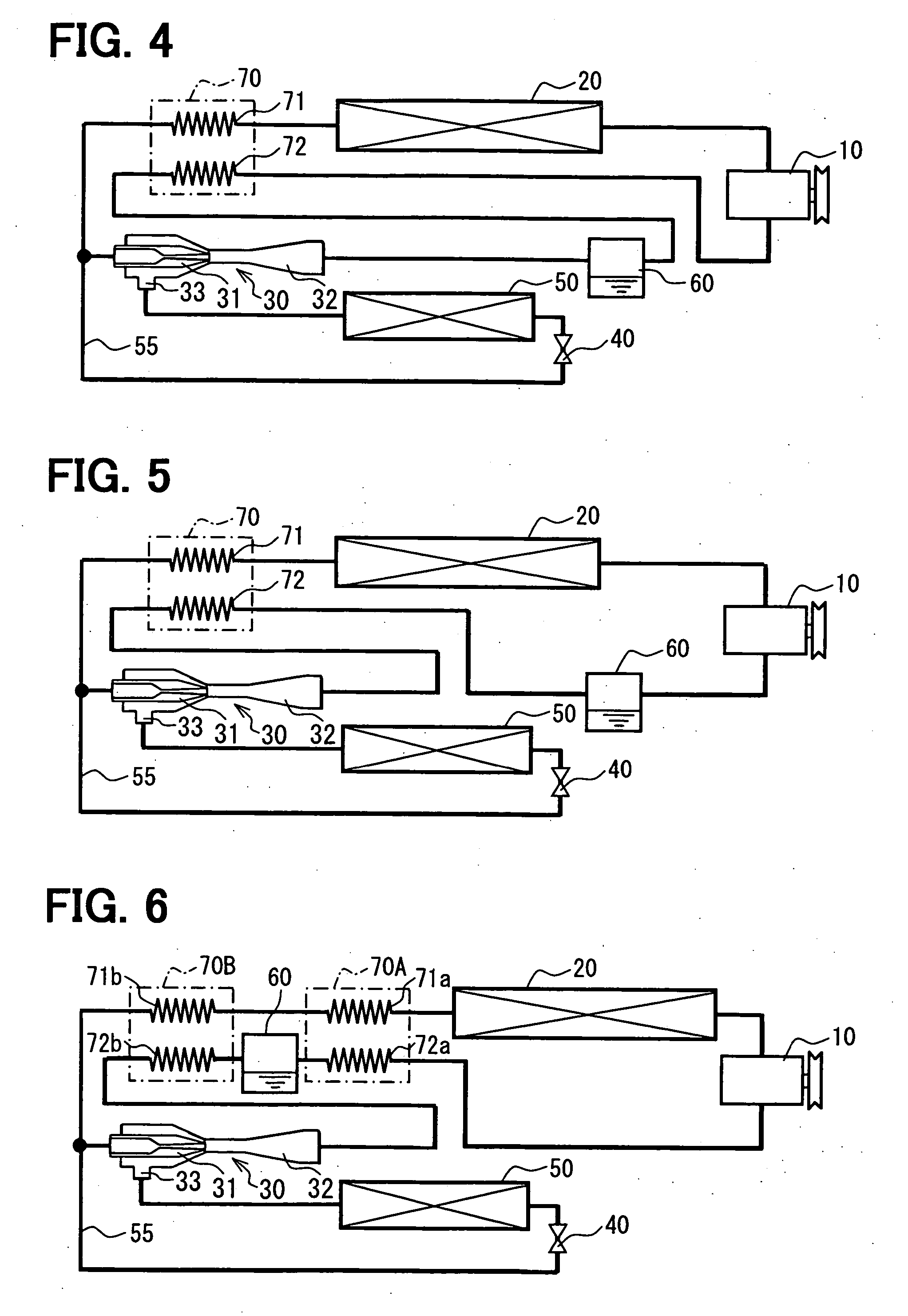Ejector and ejector cycle device
a cycle device and ejector technology, applied in the direction of machines/engines, machine operation modes, lighting and heating apparatus, etc., can solve the problems of increasing cost, reducing the amount of refrigerant flowing through the evaporator, and degrading the performance of the evaporator, so as to achieve the effect of simple structure of the ejector cycle devi
- Summary
- Abstract
- Description
- Claims
- Application Information
AI Technical Summary
Benefits of technology
Problems solved by technology
Method used
Image
Examples
1st embodiment
[0062] Hereinafter, the 1st embodiment of the present invention will be described in detail by the use of FIG. 1. FIG. 1 is a schematic diagram of a vapor compression type refrigerating cycle (ejector cycle device) using an ejector in accordance with the 1st embodiment of the present invention. In this embodiment, the vapor compression type refrigerating cycle using an ejector in accordance with the present invention is typically used for such an air conditioner for a vehicle that uses carbon dioxide (CO2) as refrigerant.
[0063] A compressor 10 is supplied with a driving force from a driving source such as a driving engine (not shown) and draws and compresses refrigerant. As the compressor 10 in this embodiment is employed a variable displacement compressor that variably controls the flow rate of discharge refrigerant (discharge refrigerant rate) in such a way that the temperature of refrigerant drawn by the compressor 10 becomes a specified temperature. The flow rate of discharge r...
2nd embodiment
[0076]FIG. 2 is a schematic diagram of a vapor compression type refrigerating cycle (ejector cycle device) using an ejector in accordance with the 2nd embodiment of the present invention. Features in which the 2nd embodiment is different from the 1st embodiment will be mainly described. In this embodiment, a flow control valve 45 as flow controlling means for controlling the flow rate of refrigerant is arranged in a refrigerant circulating passage between the radiator 20, and the nozzle portion 31 and the branch passage 55.
[0077] In the basic cycle construction of the 1st embodiment, even when a variable flow type ejector is used as the ejector 30 so as to control the flow rate of refrigerant, when the flow rate of the driving flow is decreased, the flow rate of the suction flow is increased so that the total flow rate of refrigerant flowing through the compressor 10 is not much varied. In this case, the flow rate of refrigerant may be not controlled as much as we expect.
[0078] In...
3rd embodiment
[0079]FIG. 3 is a schematic diagram of a vapor compression type refrigerating cycle using an ejector 30 in accordance with the 3rd embodiment of the present invention. Features in which the 3rd embodiment is different from the above-mentioned respective embodiments will be mainly described. In this embodiment, a vapor / liquid separator 60 that separates circulating refrigerant into vapor-phase refrigerant and liquid-phase refrigerant and supplies only the vapor-phase refrigerant to the compressor 10 and accumulates the liquid-phase refrigerant is located between the outlet of the ejector 30 and the compressor 10.
[0080] The vapor / liquid separator 60 in FIG. 3 is an accumulator into which refrigerant flowing out of the ejector 30 flows and which separates the flowing-in refrigerant into vapor-phase refrigerant and liquid-phase refrigerant and accumulates the liquid-phase refrigerant. The separated vapor-phase refrigerant is drawn by the compressor 10 and the separated liquid-phase ref...
PUM
 Login to View More
Login to View More Abstract
Description
Claims
Application Information
 Login to View More
Login to View More - R&D
- Intellectual Property
- Life Sciences
- Materials
- Tech Scout
- Unparalleled Data Quality
- Higher Quality Content
- 60% Fewer Hallucinations
Browse by: Latest US Patents, China's latest patents, Technical Efficacy Thesaurus, Application Domain, Technology Topic, Popular Technical Reports.
© 2025 PatSnap. All rights reserved.Legal|Privacy policy|Modern Slavery Act Transparency Statement|Sitemap|About US| Contact US: help@patsnap.com



